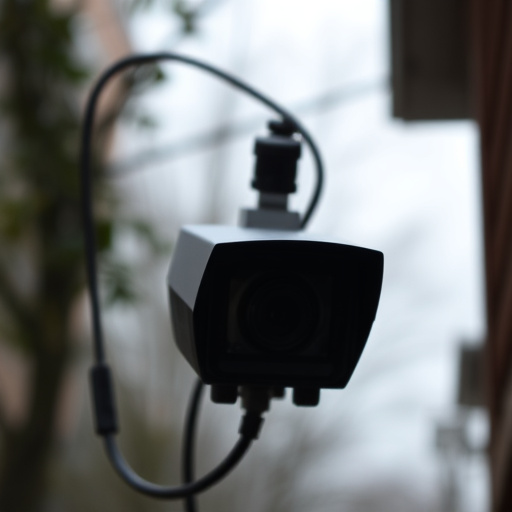Nanny cams, disguised as everyday items like smoke detectors or plants, offer unprecedented home security and peace of mind through unnoticeable surveillance. These miniature cameras, accessible via smartphone apps, capture video and photos for parents monitoring children, homeowners checking on elderly relatives, or businesses securing assets. However, their integration raises significant ethical and legal concerns regarding privacy rights, requiring strict regulations to balance enhanced security with individual privacy expectations.
“In an era where privacy is a fleeting concept, the rise of miniature surveillance devices disguised as everyday household objects has sparked both fascination and concern. This article explores the enigmatic world of ‘Nanny Cams’ and their ability to blend seamlessly into our living spaces. From seemingly innocuous kitchen timers to stylish decorative items, we uncover how these hidden cameras are transforming home security while raising ethical questions. We delve into the practical aspects and legal implications of using Nanny Cams disguised as household items, offering a comprehensive guide for informed decision-making.”
- Understanding Nanny Cams and Their Disguise Capabilities
- Common Household Items Turned Into Surveillance Devices
- Ethical Considerations and Legal Implications of Hidden Cameras
Understanding Nanny Cams and Their Disguise Capabilities
Nanny cams, or hidden surveillance cameras, have evolved to become miniature and incredibly versatile tools. One of their most intriguing applications is their ability to be disguised as everyday household items, making them near-impossible to detect. These tiny devices can take the form of common objects like light bulbs, power outlets, or even toy figures. By seamlessly integrating into our homes, they offer a level of discretion that traditional cameras cannot match.
This innovative approach allows parents, homeowners, or business owners to monitor activities without raising suspicion. A Nanny Cam disguised as a household item can capture videos and take photos secretly, providing valuable insights into what happens when no one is around. Whether it’s ensuring the safety of a child, monitoring elderly relatives, or securing a valuable asset, these hidden cameras offer peace of mind by delivering real-time footage accessible via smartphone apps.
Common Household Items Turned Into Surveillance Devices
In recent years, the concept of integrating surveillance technology into everyday household items has gained significant traction. One of the most popular and creative approaches is the use of Nanny Cams disguised as common household objects. These innovative devices transform seemingly innocuous items like smoke detectors, light bulbs, or even potted plants into secret observers, offering peace of mind to parents and homeowners alike. By seamlessly blending technology with everyday objects, these hidden cameras provide a unique solution for monitoring activities within homes without compromising aesthetics or comfort.
The appeal of Nanny Cams disguised as household items lies in their ability to blend in, making them nearly undetectable. This stealthy nature allows users to capture unfiltered video footage of their surroundings while maintaining a sense of normalcy. Whether it’s ensuring the safety of younger siblings or monitoring elderly relatives, these miniature surveillance devices offer a discreet way to stay connected and informed without drawing attention to themselves.
Ethical Considerations and Legal Implications of Hidden Cameras
The integration of miniature surveillance devices, often disguised as everyday household items like candles or electrical sockets, raises significant ethical and legal questions. While these so-called “nanny cams” offer enhanced security and peace of mind for homeowners, they also infringe upon privacy rights. The use of hidden cameras in homes without the consent of occupants is a major concern, particularly when these devices are disguised as common objects, making it difficult for individuals to know they’re being monitored.
Legally, the placement of such surveillance equipment must adhere to specific regulations and laws protecting individual privacy. In many jurisdictions, there are strict rules regarding consent, reasonable expectations of privacy, and the type of information that can be legally collected and stored. Using a nanny cam disguised as a household item could be considered an invasion of privacy, especially if the camera captures areas where individuals have a reasonable expectation of privacy, such as bedrooms or bathrooms. Ethical considerations demand transparency in surveillance practices to ensure trust between neighbors and within communities.
The integration of miniature surveillance devices into everyday home objects, commonly known as “Nanny Cams disguised as household items,” presents both innovative security solutions and significant ethical dilemmas. While these hidden cameras offer enhanced monitoring capabilities, their use raises important concerns regarding privacy and consent. As technology advances, it’s crucial for regulators and users alike to balance the benefits of such devices with stringent legal guidelines to protect individual freedoms in a world where surveillance can be as subtle as a seemingly innocuous kitchen appliance.
